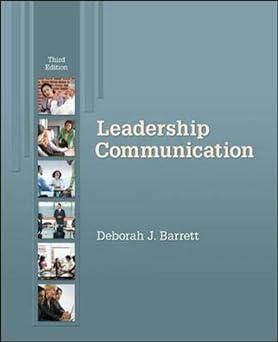Two major high-tech companies, Huge Co. (HC) and Computer Co. (CC), have recently merged to form Huge
Question:
Two major high-tech companies, Huge Co. (HC) and Computer Co. (CC), have recently merged to form Huge Computer Company (HCC) and are now starting to combine the operations of both. A key issue of the integration has been how to treat the benefit and retirement plans from the two companies—in particular, how to blend the plans for the software engineers, who are key to the continued success of the new company. Read the following case and write an executive summary of your key findings for the partner of the Human Resources Consulting firm.
Two Companies—Two Cultures HC has been an industry leader for the past 20 years in both hardware and software. HC is a large company, with an employee base of about 22,000 in four countries. Its corporate culture is relatively formal: HC does things “by the book.” About 3,500 software engineers work for HC, and all operate out of the Silicon Valley offices. The average tenure among the software engineers is 10 years. HC redesigned the software engineers’ benefits package 2 years ago, based on their research in industry best practices. HC spends about $20,000 per employee on annual benefits but has done no surveys to determine employee satisfaction with the new benefit plan.
CC is a young software company headquartered in Austin, Texas. CC is known for its leading-edge developments and has risen to the top over the last seven years. In fact, CORP. Magazine recently recognized CC as one of the “Top 100 Companies to Work For in the U.S.” Its corporate culture still has a casual, collegiate feel and its business practices are highly flexible, stressing the need for creativity and innovation. CC has about 8,000 employees, including 2,000 software engineers. Gaining access to those engineers was one of the key reasons for the merger. CC spends about $26,000 per employee on annual benefits. CC has had essentially the same benefits package for six out of its seven years of existence.
A Consulting Team Gathers Information on Benefits Although technically the two companies have been combined into one company, they are still operating independently and are just starting to combine their workforces. The COO of the new entity has hired your consulting firm to assess the current plans of both companies. It is her goal to develop a blended system that represents the best features of both benefit plans and a plan that will be well received by software engineers in both groups.
To learn more about the retirement and benefits plans at both companies, your team decides to interview HR managers and departmental managers at both companies. For both HC and CC, you want to gather information on the following topics:
• The strengths and weaknesses of current benefits programs and areas for possible improvements.
• An assessment of how well the current plan meets the needs of the software engineers.
• Each company’s perceptions of the plans of the other company.
• Key areas software engineers will be concerned about regarding the adoption of a common benefits plan.
Your team holds several interviews, from which you gain managers’ perceptions and information on both of the existing plans. Notes from two interviews are included here. The Assignment As the head of the consulting team, you need to brief the senior partner on your findings so that he can then meet with the COO at Huge Computer Company.
You need to synthesize the information from the interviews, consolidate your key findings, and develop a one-page executive summary comparing the key features of the plans and making any observations or recommendations you have about merging the plans. Remember that the senior partner may or may not read your full report, so any key findings and your recommendations need to be easy to access and understand.
Step by Step Answer:







